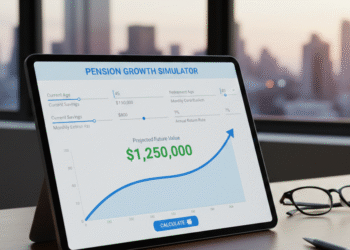Investing can feel like a confusing task, especially with the constant fluctuations of the market. For many, the goal is to find a balance between growing their wealth and minimizing risk. Systematic Investment Plans (SIPs) have emerged as a popular and effective way to achieve this. SIPs offer a disciplined approach to investing in mutual funds, allowing you to invest small, regular amounts over time. This strategy not only helps average out market volatility but also cultivates a habit of saving. If you’re looking for the best SIP plans for 2025, particularly those that balance low risk with the potential for high returns, this article will guide you through the key considerations and some potential options.
What are SIPs and Their Benefits?
A SIP involves investing a fixed sum of money in a mutual fund at regular intervals, typically monthly. This approach offers several advantages:
- Rupee Cost Averaging: By investing consistently, you buy more units when the market is down and fewer units when the market is high. This helps average out the cost of your investment over time, mitigating the impact of market volatility.
- Disciplined Investing: SIPs encourage a disciplined approach to investing. The automatic deductions make it easier to stay invested consistently, even when market conditions are uncertain.
- Power of Compounding: Over the long term, the power of compounding can significantly enhance your returns. As your investments grow, the returns earned on those investments also start generating returns, leading to exponential growth.
- Accessibility: SIPs are accessible to a wide range of investors, as they allow you to start with relatively small investment amounts.
Choosing the Right Best SIP Plans
Finding the best SIP to invest involves carefully assessing your risk tolerance and investment goals. For investors seeking a balance between low risk and high returns, certain categories of mutual funds tend to be more suitable:
- Large-Cap Funds: These funds invest primarily in the stocks of large, well-established companies. Large-cap companies are generally more stable and less volatile than smaller companies, making them a relatively safer option.
- Index Funds: Index funds track a specific market index, such as the Nifty 50 or the Sensex. They aim to replicate the performance of the underlying index, offering a diversified exposure to the market. Since they are passively managed, their expense ratios are typically lower than actively managed funds.
- Balanced Funds/Aggressive Hybrid Funds: These funds invest in a mix of equity and debt instruments. The equity component aims to provide growth potential, while the debt component provides stability. The allocation to equity and debt can vary depending on the fund’s mandate. Aggressive hybrid funds typically have a higher allocation to equity, offering greater growth potential but also higher risk.
- Conservative Hybrid Funds: These funds have a lower allocation to equity and a higher allocation to debt compared to balanced funds. They are designed to provide more stability and are suitable for risk-averse investors.
Factors to Consider When Choosing the Best SIP Plans
Choosing the best SIP plans requires careful consideration of several factors:
- Investment Horizon: Your investment horizon refers to the length of time you plan to stay invested. For long-term goals, such as retirement planning, you can consider investing in equity-oriented funds, which have the potential to generate higher returns over the long run.
- Risk Tolerance: Your risk tolerance is your ability to withstand market fluctuations. If you have a low-risk tolerance, you should focus on funds with a higher allocation to debt.
- Expense Ratio: The expense ratio is the annual fee charged by the mutual fund house to manage your investment. A lower expense ratio can significantly impact your returns over the long term.
- Fund Manager’s Track Record: The fund manager’s track record can provide insights into their investment strategy and ability to generate returns.
- Past Performance: While past performance is not indicative of future results, it can still be a useful metric to evaluate a fund’s performance over different market cycles. However, don’t solely rely on past performance; consider other factors as well.
Calculating Returns on SIP Investments
Calculating returns on SIP investments can be a bit more nuanced than a simple lump-sum calculation due to the varying purchase prices of units over time. While you can manually track each investment and calculate the compounded growth, a much easier and more efficient method is using a SIP calculator. These online tools, readily available on financial websites, consider factors like the investment amount, frequency, tenure, and expected rate of return to project the potential maturity amount. The SIP calculator simplifies the process by factoring in rupee cost averaging and compounding, giving you a clearer picture of your investment’s potential growth over time. It’s a valuable tool for planning and visualizing the long-term impact of your SIP investments, allowing you to experiment with different scenarios and adjust your investment strategy accordingly.
Conclusion
SIPs offer a way to invest in mutual funds, especially for those seeking a disciplined approach and the potential for long-term growth. By carefully considering your investment goals, risk tolerance, and the various factors discussed above, you can choose the best SIP plans that align with your needs and help you achieve your financial objectives. Remember, finding the best SIP to invest is a personalized journey. Thorough research, understanding your own financial situation, and seeking professional advice are crucial steps toward building a successful investment portfolio.













